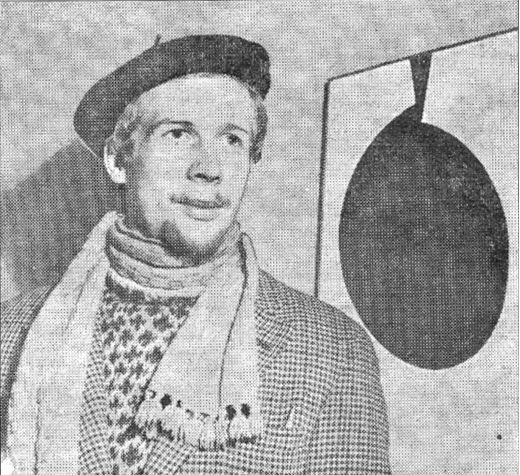Ole Schwalbe on:
[Wikipedia]
[Google]
[Amazon]
 Ole Albert Christian Schwalbe (23 July 1929 – 15 October 1990) was a Danish painter. He was one of the painters in the
Ole Albert Christian Schwalbe (23 July 1929 – 15 October 1990) was a Danish painter. He was one of the painters in the
Illustrated list from Kunstindeks Danmark of works by Ole Schwalbe in Danish museumsSelection of Schwalbe's works from Kunst på arbejda
{{DEFAULTSORT:Schwalbe, Ole 1929 births 1990 deaths 20th-century Danish painters Artists from Copenhagen Recipients of the Thorvaldsen Medal Royal Danish Academy of Fine Arts faculty
 Ole Albert Christian Schwalbe (23 July 1929 – 15 October 1990) was a Danish painter. He was one of the painters in the
Ole Albert Christian Schwalbe (23 July 1929 – 15 October 1990) was a Danish painter. He was one of the painters in the Linien
Linien (meaning "The Line") was an artists' association in Denmark in the 1930s and 1940s focusing on Abstraction and Symbolism. The group's exhibitions in Copenhagen created wide international participation. After the Second World War, the associ ...
artists association who in 1956 initiated the second generation of Danish Constructivism
Constructivism may refer to:
Art and architecture
* Constructivism (art), an early 20th-century artistic movement that extols art as a practice for social purposes
* Constructivist architecture, an architectural movement in Russia in the 1920s a ...
which they called concrete realism.
Biography
Born in theBrønshøj
Brønshøj, part of the municipality of Copenhagen, forms, together with Husum, the administrative city district (''bydel'') of Brønshøj-Husum, in Denmark.
History
The first mention of the village Brønshøj (Brunshoga), is in a letter dated Oc ...
district of Copenhagen, Schwalbe was self-taught as a painter but was trained as a printmaker from 1945 to 1950. He first exhibited at the Kunstnernes Efterårsudstilling
Den Frie Udstilling ('The Free Exhibition') is a Danish artists' association, founded in 1891 by artists in protest against the admission requirements for the Kunsthal Charlottenborg. Modeled on the Salon des Refusés, it is Denmark's oldest asso ...
(Artists Autumn Exhibition) in 1945 when he was only 16.
Schwalbe was one of the Linien
Linien (meaning "The Line") was an artists' association in Denmark in the 1930s and 1940s focusing on Abstraction and Symbolism. The group's exhibitions in Copenhagen created wide international participation. After the Second World War, the associ ...
painters who in 1956 initiated the second generation of Danish Constructivism
Constructivism may refer to:
Art and architecture
* Constructivism (art), an early 20th-century artistic movement that extols art as a practice for social purposes
* Constructivist architecture, an architectural movement in Russia in the 1920s a ...
which they called concrete realism. After experimenting with colour, in 1953 he decided to limit himself to black and white, forming positive and negative segments of circles like the marks made by a paperclip. In the late 1950s, he added red to the black and white in order to represent the three most important aspects of existence: life and death, body, and soul. Around 1960, his black and white developed into shades of grey as in ''Signet 1'' (1960) but then he began to reintroduce colour with a deep blue in ''Entre chien et loup'' (1965).
He believed in total interaction between art and architecture, as in his decoration of Brandbjerg School (1970) when he introduced artistic features which were integrated during the building's construction. Other building decorations included Sukkertoppen Forsamlinghus (1972), the Danish Embassy in London (1977) and Holstebro's library (1981) and town hall (1986). One of his few sculptures is ''Kuglen'' in the entrance hall of Holsterbro Town Hall.
Awards
In 1966, Schwalbe received the Academy's gold medal and, in 1978, theThorvaldsen Medal
The Thorvaldsen Medal (Danish: Thorvaldsens Medalje, Thorvaldsen Medaillen) is awarded annually with few exceptions to a varying number of recipients by the Royal Danish Academy of Fine Arts and is its highest distinction within the visual arts. It ...
.
References
Literature
* * *External links
Illustrated list from Kunstindeks Danmark of works by Ole Schwalbe in Danish museums
{{DEFAULTSORT:Schwalbe, Ole 1929 births 1990 deaths 20th-century Danish painters Artists from Copenhagen Recipients of the Thorvaldsen Medal Royal Danish Academy of Fine Arts faculty